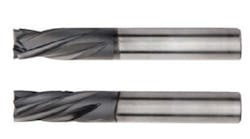The total U.S. trade deficit in goods and services fell 6.8 percent in 2007, from $758.52 billion to $711.61 billion, with all of the net improvement generated by a major fall-off in imports, not the export boom touted by U.S. government officials according to a U.S Business and Industry Council report (www. americaneconomicalert.org.com).
The report went on to say that in many of the sectors generating the economy’s highest paying jobs and greatest productivity growth and technological progress – manufacturing and high-tech manufacturing – meaningful trade deficit improvement was difficult to find.
Total exports of goods and services recorded its second straight year of double-digit growth. But the 12.18 percent increase in 2007 – to $1.62 trillion – was slightly slower than the 12.68 percent increase registered in 2006. The big change in trade flows came on the import side, where growth slowed from 10.35 percent in 2006 to 5.86 percent in 2007. Total import levels hit $2.33 trillion last year.
Said Kevin L. Kearns, president of the U.S. Business and Industry Council, “The facts make clear that export boom claims are falsehoods concocted by the Bush administration and other outsourcing interests to cover up continuing trade policy failures. America’s trade numbers are improving because the U.S. economy is slowing – not because recent presidents have opened new foreign consumer markets or adequately dealt with predatory foreign trade practices.”
“A $700-plus billion trade deficit is completely unacceptable for America’s competitive producers. It also keeps saddling our citizens and their children with ever more debt, and keeps enabling foreign interests to increase their influence over our economic future. Yet both the Bush administration and the Democratic Congress continue ignoring America’s biggest trade problem – blatant cheating by China and other Asian countries on currency, subsidies, and numerous other fronts – and keep focusing their trade policy efforts on new outsourcing-focused deals with minuscule third world economies. Both major political parties urgently need to start championing genuinely American interests in U.S. trade policy, and the place to start is with a strong currency manipulation bill,” continued Kearns.”
The hollowness of export boom claims was also evident from trends in goods trade, which dominates U.S. trade flows. Export growth slowed from 14.36 percent to 12.34 percent over the last two years, with exports reaching $1.15 trillion in 2007. But import growth, again, fell by nearly half – from 10.68 percent to 5.56 percent. Goods imports stood at $1.96 trillion last year.
Services trade offered a partial exception to the pattern. Export growth accelerated between 2006 and 2007 – from 8.79 percent to 11.80 percent. But import growth fell here as well – from 8.61 percent to 7.48 percent. As a result, the longstanding services trade surplus jumped 30.37 percent from 2006 to 2007, to $103.97 billion – still only 12.75 percent of the goods deficit.
The modest 3 percent fall in the manufactures trade deficit in 2007 was also driven by declining imports. U.S. manufactures exports increased by 10.71 percent in 2007, to $869.71 billion. Yet that growth represented a major slowdown from the 14.62 percent rise in 2006. Import growth, by contrast, fell by more than half – from 10.02 percent in 2006 to just 4.59 percent in 2007. Manufactures imports reached $1.48 trillion in 2007, and the deficit hit $611 billion.
In the U.S. high tech manufacturing sector, exports increased by only 8.20 percent – a slower rate than for the rest of manufacturing. Much larger import flows surged 12.44 percent, boosting the deficit to a new record of $53.49 billion.
Growth in goods exports to most major U.S. trading partners declined significantly in 2007 as well, but goods import growth fell much faster. In 2006, for example, U.S. goods exports to rapidly expanding China jumped 31.63 percent – the biggest percentage increase for any major trading partner. But in 2007, this growth had shrunk to 18.21 percent. Import growth from China declined, too, but not as dramatically – from 18.20 percent to 11.72 percent. Since U.S. goods imports from China dwarf exports in absolute terms, the U.S. merchandise trade deficit with China rose another 10.18 percent in 2007, to $256.27 billion – and hit another new record.
The only exception to the pattern was U.S. trade with the Euro area. U.S. goods export growth quickened from 13.26 percent in 2006 to 15.94 percent in 2007. Import growth rates increased as well, from 7.77 percent to 8.16 percent.
The most dramatic slowdown in U.S. goods export growth came with Mexico – from 11.31 percent in 2006 to a bare 1.91 percent in 2007. The biggest decreases in U.S. goods import rates came from Mexico as well (from 16.54 percent growth to 6.33 percent growth), and from Japan – whose exports to the United States actually fell by 1.83 percent in 2007 after rising by 7.37 percent in 2006.
Latest from Uncategorized
Latest from Uncategorized
Uncategorized
Newsletter Confirmation Page
Oct. 29, 2012
Uncategorized
Gearmaking with Precision, and Speed
July 26, 2012
Uncategorized
Composites, With No Limits
July 25, 2012



